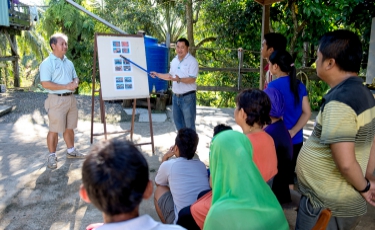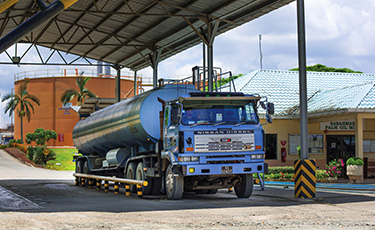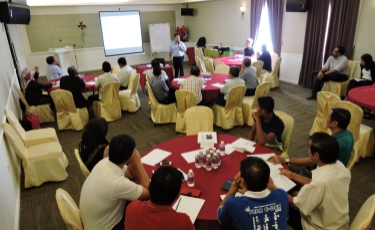High Conservation Values (HCV)
According to the High Conservation Values (HCV) Common Guidance Toolkit, HCVs are defined as biological, ecological, social or cultural values which are considered outstandingly significant or critically important, at the national, regional or global level.
The six HCVs:
| HCV 1 | Concentrations of biological diversity including endemic species, and rare, threatened or endangered species, that are significant at global, regional or national levels. |
| HCV 2 | Intact forest landscapes and large landscape-level ecosystems and ecosystem mosaics that are significant at global, regional or national levels, and that contain viable populations of the great majority of the naturally occurring species in natural patterns of distribution and abundance, |
| HCV 3 | Rare, threatened, or endangered ecosystems, habitats or refugia. |
| HCV 4 | Basic ecosystem services in critical situations, including protection of water catchments and control of erosion of vulnerable soils and slopes. |
| HCV 5 | Sites and resources fundamental for satisfying the basic necessities of local communities or indigenous peoples (for livelihoods, health, nutrition, water, etc...). Identified through engagement with these communities or indigenous peoples. |
| HCV 6 | Sites, resources, habitats and landscapes of global or national cultural, archaeological or historical significance, and/or of critical cultural, ecological, economic or religious/sacred importance for the traditional cultures of local communities or indigenous peoples. Identified through engagement with these local communities or indigenous peoples. |
Source: HCV Common Guidance Toolkit
 All areas that are identified as HCV, HCS or riparian areas, are categorized by Wilmar as conservation areas and are actively managed and monitored under Wilmar's conservation management programme based on the principles of our biodiversity conservation commitments. This categorization may differ from the reporting definitions set by RSPO ACOP.
All areas that are identified as HCV, HCS or riparian areas, are categorized by Wilmar as conservation areas and are actively managed and monitored under Wilmar's conservation management programme based on the principles of our biodiversity conservation commitments. This categorization may differ from the reporting definitions set by RSPO ACOP.
Comprehensive and robust HCV assessments are conducted by independent experts and peer-reviewed by the HCV Resource Network before any land clearing or new plantation development commences. We had been using RSPO Approved Assessors in all our assessments, and subsequently HCV Licensed Assessors when the Assessor Licensing Scheme was launched in Jan 2015. Since the convergence of the HCV-HCS integrated methodology in 2016, assessments covering both HCV and HCS are carried out jointly and quality assured under the ALS.
If HCV-HCS are present in our sites, we implement the following measures:
- Formulate management plans to manage and protect the HCV-HCS areas that have been identified;
- The management plans will include the schedule for monitoring the HCV-HCS areas to ensure that no illegal activities i.e. logging, mining and poaching occur. In the HCV-HCS areas identified for its cultural values, our monitoring plan is to ensure that the boundaries are respected and that there are no illegal activities such as encroachment by external parties into the area. For HCV-HCS areas identified to harbour endangered, rare or threatened species, our monitoring will include periodical biological monitoring and inventory of species and ensure that the records are sent to the local government office for their records.
- In areas where there has been historical degradation on HCV-HCS or any non-compliant land clearing within our concession as per our NDPE cutoff date, restoration and reforestation activities are undertaken to enhance the conservation values identified and to improve landscape connectivity.
Our monitoring programme has been put in place since 2004 and we have recorded no illegal and/or deforestation cases in our own operations as at end of 2023.
Smallholder Programmes
Integrating smallholders into the global sustainable supply chain.

Traceable Supply Chain
Supply chain map and traceability statistics.

Supply Chain Transformation
Driving real change on the ground with Aggregator Refinery Transformation (ART) and Proactive Surveillance.

